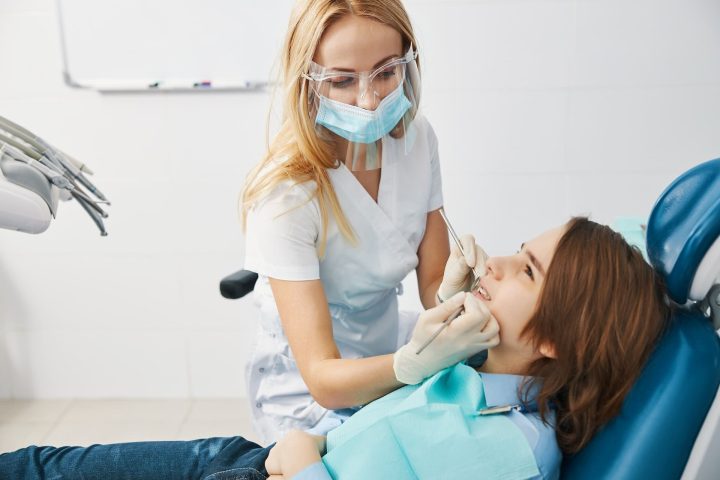Orthodontic treatment plays a vital role in pediatric dentistry as it addresses issues related to the alignment of teeth and jaws, ultimately helping children achieve a beautiful and healthy smile. From correcting bite problems to adjusting crooked teeth, orthodontics not only enhances your child’s appearance but also contributes to their overall oral health.
At Waban Dental Group, we recognize the importance of providing comprehensive and customized orthodontic treatment options for our pediatric patients. Our team of experienced dental professionals is well-equipped to guide you and your child through the journey of achieving the perfect smile. As the Best of Boston by Boston Magazine 2017-2019 and the Number One Dental Group in Newton, Massachusetts, by the Wicked Local Readers, our commitment to quality care remains unparalleled.
Our goal is to provide you with the essential knowledge and insights necessary to navigate the world of pediatric orthodontics confidently. With the right guidance and support, you can equip your child with a beautiful, healthy smile that will last a lifetime.
Understanding Common Orthodontic Issues in Children and the Importance of Early Intervention
Orthodontic issues can manifest in various forms, including crooked teeth, improper bites (malocclusions), gaps, crowding, and jaw misalignments. Early identification and intervention can prevent complex and costly treatments later in life. Some benefits of early orthodontic intervention include:
1. Guiding proper jaw growth and teeth alignment
2. Correcting harmful dental habits, such as thumb sucking or tongue thrusting
3. Reducing the risk of tooth decay and gum disease due to improper tooth alignment
4. Minimizing the potential for tooth extraction or complex orthodontic treatment in the future
5. Boosting self-confidence and overall quality of life
Exploring Different Types of Orthodontic Treatments for Children
Various orthodontic treatment options cater to children’s diverse needs. These treatments fall under two primary categories: fixed and removable.
1. Fixed Treatments:
- Traditional Metal Braces: These consist of metal brackets, archwires, and bands that apply consistent pressure to gradually shift teeth into the desired position.
- Ceramic Braces: Similar to metal braces, ceramic braces function with the same mechanics but use tooth-colored brackets to make them less noticeable.
- Lingual Braces: These are placed behind the teeth, making them virtually invisible, while offering the same benefits as traditional braces.
2. Removable Treatments:
- Clear Aligners: These are custom-made, transparent plastic trays that fit over the teeth. They offer a discreet and comfortable solution without the use of metal braces.
- Orthodontic Appliances: These devices include space maintainers, expanders, and functional appliances. They are designed to address specific orthodontic issues like misaligned jaws or overcrowded teeth.
Navigating the Stages of Orthodontic Treatment
Orthodontic treatment in children typically occurs in stages, which may overlap depending on the individual case. Understanding each stage can help better prepare your child for the journey ahead.
1. Early Evaluation: This assessment should occur around the age of seven when the first permanent teeth emerge. This timely evaluation allows orthodontists to identify potential concerns and recommend appropriate treatment options.
2. Phase-One Treatment: Also known as interceptive treatment, this phase addresses early orthodontic issues to minimize the need for extensive treatment later in life. Examples include space maintainers and palatal expanders.
3. Comprehensive Treatment: This phase typically involves the use of braces or aligners to correct the remaining alignment and bite issues. The treatment duration can vary from one to three years based on the severity of the case.
4. Retention: Once active treatment concludes, a retainer is used to maintain teeth in their new position and prevent relapse. Retainers may be removable or fixed, and their usage duration is determined on a case-by-case basis.
Choosing the Right Orthodontic Treatment for Your Child
Finding the best orthodontic treatment for your child requires considering several factors, including:
1. The severity of the orthodontic issue
2. The specific treatment recommendations from your orthodontist
3. Your child’s comfort and preferences
4. The cost of the treatment
5. The anticipated treatment duration
Consulting with a trusted orthodontist, like the professionals at Waban Dental Group, will help you make an informed decision based on your child’s unique needs.
Post-Treatment Care and Maintenance
Once your child completes orthodontic treatment, it’s crucial to adhere to post-treatment care instructions to ensure lasting results. Key aspects of post-treatment care include:
1. Consistent use of retainers as prescribed by the orthodontist
2. Maintaining excellent oral hygiene to preserve the health of teeth and gums
3. Regular dental checkups and cleanings to monitor oral health
4. Practicing a well-balanced diet for optimal dental health
Conclusion
Orthodontic treatment is an essential aspect of pediatric dentistry that can significantly impact a child’s oral health and overall well-being. By understanding the common orthodontic issues, treatment options, and the various stages of treatment, you can confidently prepare your child for their journey to a perfect smile.
At Waban Dental Group – Pediatric Dentistry & Orthodontic, our team of experienced pediatric dental professionals is committed to providing comprehensive orthodontic care tailored to your child’s needs. As the Best of Boston by Boston Magazine 2017-2019 and the Number One Dental Group in Newton, Massachusetts, by the Wicked Local Readers, we strive to ensure the best possible results and a lifetime of beautiful, healthy smiles for your child.









